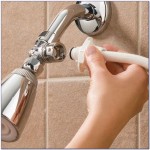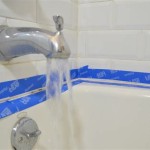Caulk For Bathtub: An Essential Guide
Caulking is an essential part of any bathtub installation or renovation. It helps to seal the gaps between the bathtub and the surrounding surfaces, preventing water damage and mildew buildup. Choosing the right caulk for your bathtub is important to ensure that it will provide a durable and effective seal. Here are some of the key factors to consider when selecting caulk for bathtub.
Type of Caulk
There are two main types of caulk commonly used for bathtubs: silicone caulk and acrylic latex caulk. Silicone caulk is a more expensive option, but it is also more durable and waterproof than acrylic latex caulk. It is best suited for areas that will be exposed to frequent moisture, such as the shower or bathtub surround. Acrylic latex caulk is a more affordable option, but it is not as durable or waterproof as silicone caulk. It is best suited for areas that will not be exposed to a lot of moisture, such as the base of the bathtub.
Color
Caulk is available in a variety of colors to match the color of your bathtub and bathroom décor. White is the most common color for caulk, but you can also find caulk in colors such as black, brown, gray, and beige. If you are not sure what color to choose, you can always ask a professional for advice.
Application
Caulk is applied using a caulk gun. Caulk guns are available at most hardware stores. Before applying caulk, it is important to clean the surfaces that you will be caulking. This will help to ensure that the caulk will adhere properly. Once the surfaces are clean, you can apply the caulk using a caulk gun. Be sure to apply the caulk evenly and smoothly. Once the caulk has been applied, you can use a damp cloth to smooth out any rough edges.
Maintenance
Caulk should be inspected regularly for signs of wear or damage. If you notice any cracks or gaps in the caulk, it is important to repair them as soon as possible. Caulk can be repaired using a caulk repair kit. Caulk repair kits are available at most hardware stores. By following these tips, you can choose the right caulk for your bathtub and ensure that it will provide a durable and effective seal.

How To Caulk A Bathtub On Sutton Place

Caulking A Bathtub Simple Steps For Successful Seal

How To Caulk A Bathtub 13 Steps With Pictures Wikihow

How To Caulk A Shower Or Tub True Value

How To Caulk A Bathtub On Sutton Place

How To Caulk A Bathtub 13 Steps With Pictures Wikihow

How To Re Caulk A Bathtub

How To Use Bathroom Caulk For A Fresh New Seal

How To Caulk A Bathtub Cautionary Tale Designertrapped Com

How To Re Caulk A Bathtub








